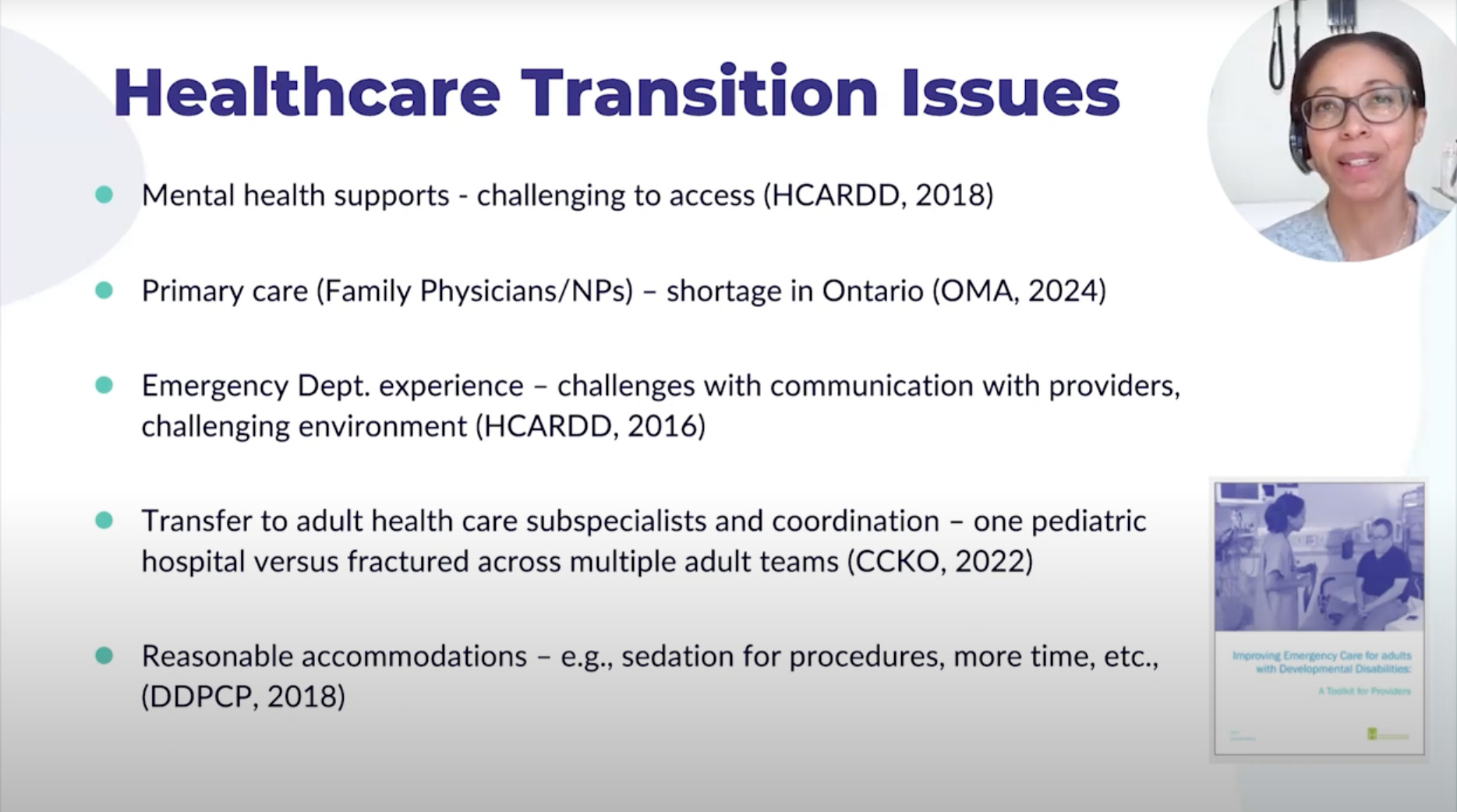 Play video
Play video
PRESENTERS:
Megan Henze, Transitional Services Facilitator, Surrey Place
Angie Gonzales, is a Nurse Professional Practice Lead and Clinical Nurse Specialist at Surrey Place. She provides nursing consultation care with Surrey Place’s Plus 45 clinical team. She is currently also part of ECHO Ontario Adult Intellectual & Developmental Disabilities program.
Participants will be able to:
- Understand approaches and opportunities for promoting decision-making capabilities in supporting persons with intellectual/developmental disabilities’ (IDD) transitioning from pediatric to adult health care.
- Discuss higher prevalence issues for Transition-Age Youth with IDD, e.g.,
- Mental health
- Sexual health
Consider examples of tools for optimizing transition support:
- SHARE Transition Plan Tool
- My Hospital Form
- New DD Primary Care Program Mental Health Toolkit
Recorded at the Shared Learning Forum – April 26, 2024
Download a PDF of the presentation
 Play video
Play video






